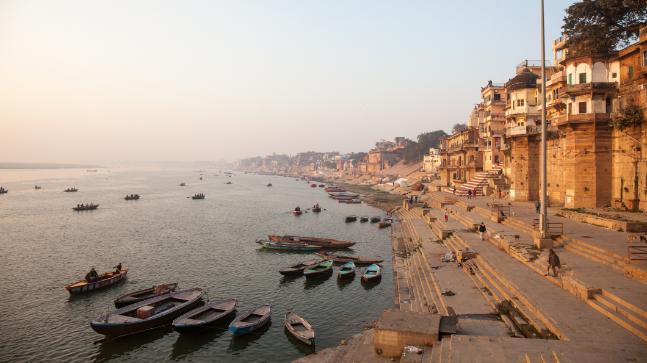Ganges, the third largest river on Earth, rises from the Western Himalayas. Human beings living near the river banks depend on the water for their livelihood and daily needs. The river is venerated as Goddess Ganga in Hinduism but the same river has a lot of threat from humans as well. The river is polluted on a daily basis through sewage waste, industrial waste, religious offerings, cremation waste and many more. More than a million people depend on that water for drinking, washing and cooking purposes and many visit that place for the holy dip in the water. The river was also promised to be cleaned by the Government under the ‘Ganga Action Plan’ which proved to be a failure and the river is changing its colour to green day after day. This is a sign to show that the water is getting toxic and utilizing the same can be dangerous for humans as well as the animals.
In few Ghats of the Ganga river, the green patches are usually seen but not in all the Ghats. In Varanasi, from Sindhya Ghat to Raja Ghat the water has turned green this time and people living on the banks of those Ghats are worried now.
The scientists say that formation of green patches in Ganga is usual during March to May, which is almost close to the rainy season. The green patch is due to the presence of algae that would have flown from the nearby ponds and lakes and also from agricultural lands. When the flow of water will increase, the green patch will gradually reduce. But if the green patch stays for a longer period then the nutrients will start increasing and the sunlight will go deep within those patches and photosynthesis process will begin and the toxics will begin to release which can be harmful for the animals and human beings.
The water has been taken for testing in various laboratories to test the extent of danger as of now. The scientists say there is nothing to worry as of now but if it stays too long then it is a matter to worry. But the locals are complaining that the water is not only turning green in colour but there is a foul smell that is increasing day by day.
During the first wave of Covid-19, River Ganga was crystal clear due to less pollution and had cleaned itself but during the second wave the situation is completely opposite as the risk is increasing and the action needs to be taken to save many lives.

